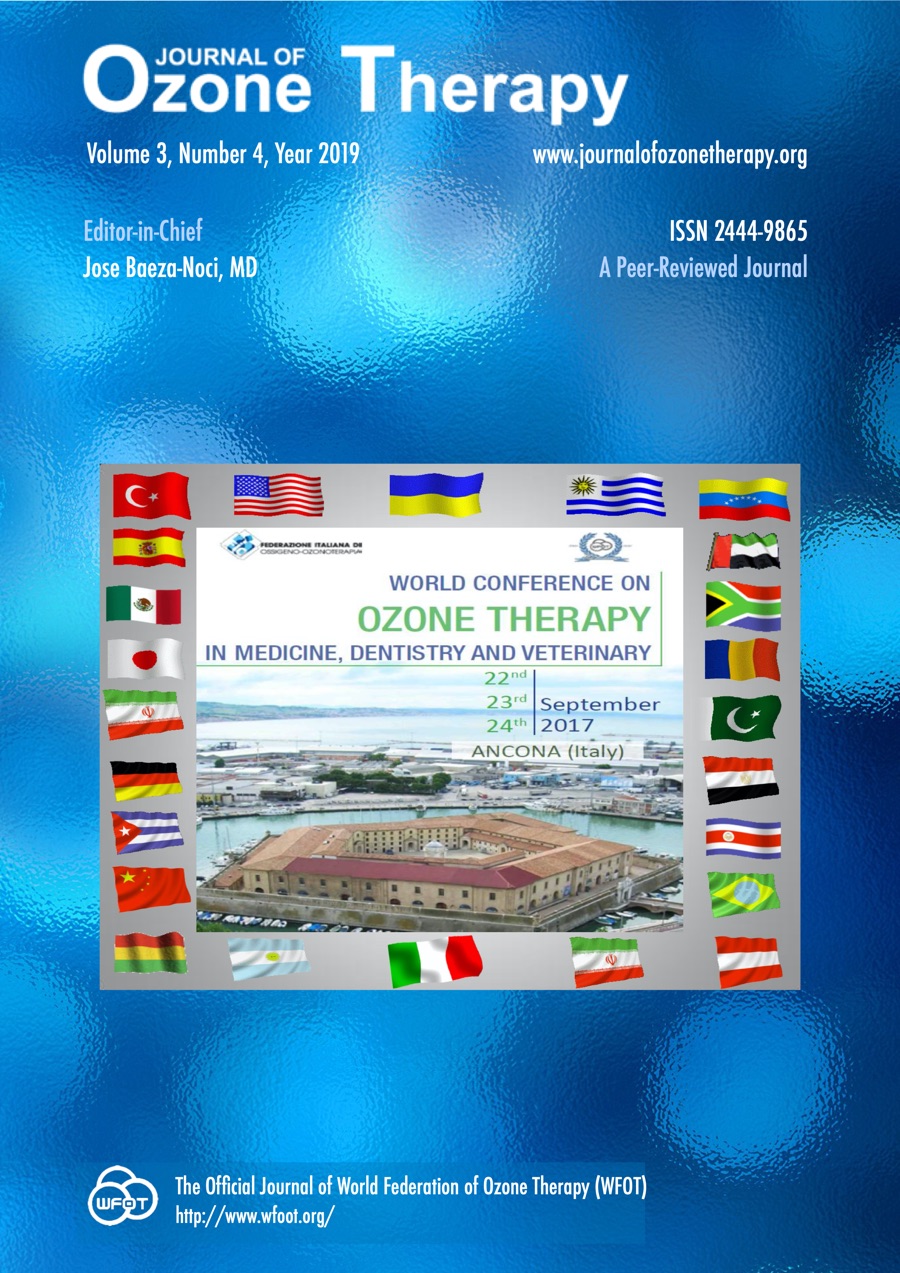Systemic ozone applications, Major autohemotherapy and Rectal Insufflation, evaluated according to the International classification of Evidence-Based Medicine. A new basis for reimbursement of medical expenses by private and social insurances [abstract]
DOI :
https://doi.org/10.7203/jo3t.3.4.2019.15550Mots-clés :
ozone thrapy, major autohemotherapy, rectal insufflation Résumé
Résumé
Now that indications are clearly defined, applications have mostly become standardized and the active mechanisms have been well confirmed, medical ozone application in the form of the low-dose concept, is established and proven as a complementary medical method in the treatment of chronic inflammations or diseases associated with chronic inflammatory conditions.
More than 11,000 systemic ozone treatments in the form of Major Ozone Autohemotherapy (MAH) in 577 patients and ? 47,000 Rectal Insufflations (RI) in 716 patients in various clinical studies are subjected to critical clinical assessment and classification according to the criteria of evidence-based medicine (EBM).
Statistically significant clinical and/or pharmacological improvements without side-effects or adverse reactions are found in all studies; special attention is drawn to maintaining hygiene when working with blood and to the use of ozone-resistent and biocompatible materials.
On summarizing the evidence classification under RCT + CT (Randomized Controlled Trials + Controlled Trials), i.e. Levels Ib and IIa, 12 studies with 657 ozone-treated patients are obtained for MAH and 6 studies with 227 patients for RI.
As a result of the evidence here assessed, the two systemic ozone applications, MAH and RI are part of evidence-based medicine. Both applications are effective, safe and economic.
 Téléchargements
Téléchargements
Téléchargements
Publié-e
Comment citer
-
Résumé1304
-
PDF 521
Numéro
Rubrique
Licence
Journal of Ozone Therapy applies the Creative Commons Attribution-NonCommercial 4.0 International License (CC BY NC 4.0) license to works we publish.
Under this license, authors retain ownership of the copyright for their content, but allow anyone to download, reuse, reprint, modify, distribute and/or copy the content as long as the original authors and source are cited. No permission is required from the authors or the publishers.
You may not use the material for commercial purposes.
Appropriate attribution can be provided by simply citing the original article, provide a link to the license, and indicate if changes were made.
You may do so in any reasonable manner, but not in any way that suggests the licensor endorses you or your use.




